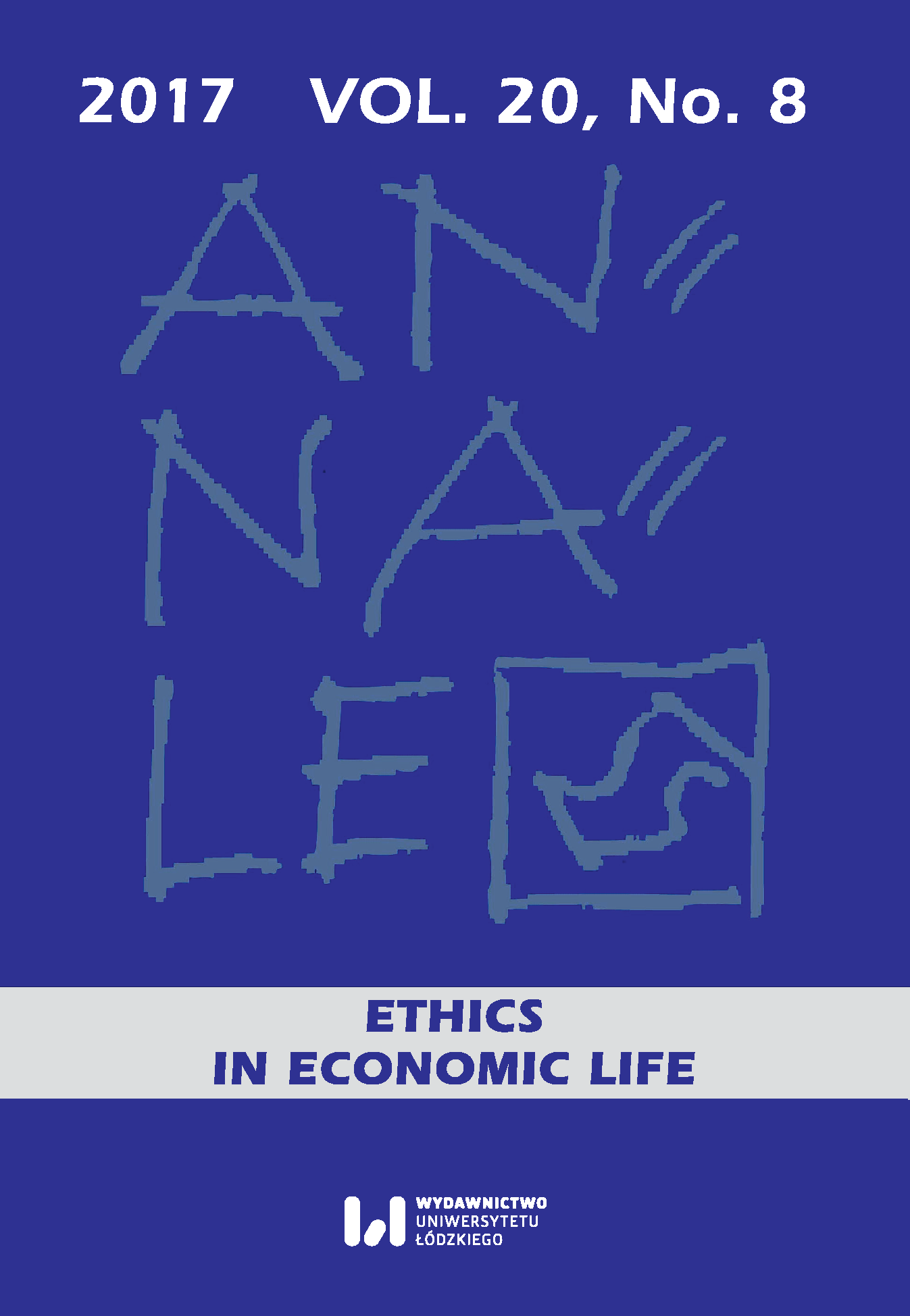The phenomenon of the precariat in the Polish labour market during Poland’s membership in the European Union
DOI:
https://doi.org/10.18778/1899-2226.20.8.11Słowa kluczowe:
precariat, labour market, non-standard forms of employmentAbstrakt
Studies of the scale of unemployment in Poland and in Europe conducted in recent years lead to the conclusion that one of the largest and growing problems of the modern labour market is the unemployment rate among young people. An unfavourable phenomenon related to this issue, which is increasingly often appearing in public debate, is the rising unemployment of graduates. Therefore, it is important to attempt to identify related phenomena in today’s job market, and one of such phenomena is the emergence of a new type of employee in the labour market, a member of the precarious class. The analysis aims to present the origins, nature and scale of the precariat phenomenon in Poland. The issue is described from the perspective of the labour market position of a selected social group, i.e. young people entering the labour market after finishing their education. The study attempted to identify factors that affect this phenomenon and the characteristics confirming the sense of its separateness in the labour market.
Bibliografia
Centrum Badania Opinii Społecznej. (2014). Polacy w pracy. Warunki zatrudnienia, gotowość zmian [Komunikat z badań CBOS, No. 132]. Warszawa. http://www.cbos.pl/SPISKOM.POL/2014/K_132_14.PDF
Google Scholar
Centrum Badania Opinii Społecznej. (2015). Ocena sytuacji na rynku pracy i poczucie zagrożenia bezrobociem, [Komunikat z badań CBOS, No. 53]. Warszawa. http://www.cbos.pl/SPISKOM.POL/2015/K_ 053_15.PDF
Google Scholar
Cymbranowicz, K. (2014). Flexicurity – A New Tool for Human Recourses Management. In P. Lula, & T. Rojek (Eds.), Knowledge – Economy – Society: Contemporary Tools of Organizational Resources Management. Crakow: Faculty of Management of the Cracow University of Economics – Foundation of the Cracow University of Economics.
Google Scholar
Cymbranowicz, K. (2015). The Impact of Flexicurity on the Functioning of the Labour Market in the European Union. In A. Malina, R. Oczkowska, & J. Kaczmarek (Eds.), Knowledge – Economy – Society: Challenges and Development Trends of Modern Economy, Finance and Information Technology. Cracow: Faculty of Management of the Cracow University of Economics – Foundation of the Cracow University of Economics.
Google Scholar
Cymbranowicz, K. (2016). Prekariat – nowe zjawisko na rynku pracy w Polsce. Annales. Ethics in Economic Life, 19(2), 17–30.
Google Scholar
GUS [Central Statistical Office of Poland]. (2017). Mały rocznik statystyczny Polski 2017. Warszawa: GUS.
Google Scholar
Hanyga, K. (2012). Pęczniejący prekariat. Sprawy Nauki, 10 (173). http://www.sprawynauki.edu.pl/index.php?option=com_content&view=article&id=2305:prekaryzacja-wofensywie&catid=301&Itemid=30
Google Scholar
Jourdan, S. (2012). Le précariat: «Une classe sociale en devenir». Néo-libéralisme. http://www.bastamag.net/Le-precariat-Une-classe-sociale-en
Google Scholar
Kaleta, W. (2015, 29 June). Prekariat to ogromny problem: Kto utrzyma ludzi po umowach śmieciowych, gdy przyjdzie czas ich emerytur? pulsHR.pl. https://www.pulshr.pl/prawo-pracy/prekariat-to-ogromny-problem-kto-utrzyma-ludzi-po-umowach-smieciowych-gdy-przyjdzie-czas-ich-emerytur,27043.html
Google Scholar
Kancelaria Prezesa Rady Ministrów. (2011). Raport “Młodzi 2011.” Warszawa.
Google Scholar
Kiersztyn, A. (2014). Niepewność zatrudnienia. Kto jej doświadcza? Czy to stan chwilowy? Warszawa: Zespół Porównawczych Analiz Nierówności Społecznych, Instytut Filozofii i Socjologii Polskiej Akademii Nauk.
Google Scholar
Kozek, W. (2013). Rynek pracy. Perspektywa instytucjonalna. Warszawa: Wydawnictwo Uniwersytetu Warszawskiego.
Google Scholar
Poławski, P. (2012). Generacja prekariuszy na polskim rynku pracy. Polityka Społeczna, 9, 16–23.
Google Scholar
Popiołek, A., & Kiełbasiński, A. (2014, March 31). Młodzi bez etatu i bez szans. Stracone pokolenie? Gazeta Wyborcza, 75. http://wyborcza.pl/1,76842,15713351,Mlodzi_bez_etatu_i_bez_szans__Stracone_pokolenie_html
Google Scholar
Savage, M. (2013). A new model of social class? Findings from the BBC’s Great British class survey experiment. Sociology, 47(2), 219–250.
Google Scholar
Smoczyński, W. (2011, September 7). Prekariusze wszystkich krajów. Polityka, 37(2824). http://www.polityka.pl/tygodnikpolityka/swiat/1519162,1,prekariat-mlodzi-bez-perspektyw-no wa-klasa-spoleczna.read
Google Scholar
Standing, G. (2011a). The precariat. The new dangerous class. London-New York: Bloomsbury Academic.
Google Scholar
Standing, G. (2011b). The Precariat: The New Dangerous Class. GCPH Seminar Series 8. https://www.guystanding.com/files/documents/The_Precariat_final_summary_GCPH_Nov_11.pdf
Google Scholar
Szaban, J. (2013). Rynek pracy w Polsce i w Unii Europejskiej. Warszawa: Wydawnictwo Difin.
Google Scholar
Vostal, F. (2014). Prekaryjność socjologii. Notatki z Czech. Globalny Dialog, 4(3), 39–40.
Google Scholar
Wężyk, K. (2014, November 22–23). Wyklęty lud ziemi, o jakim Marksowi się nie śniło. Gazeta Wyborcza, 271. http://wyborcza.pl/magazyn/1,142071,17 000733,Wyklety_lud_ziemi__o_jakim _Marksowi_sie_nie_snilo.html
Google Scholar
Pobrania
Opublikowane
Jak cytować
Numer
Dział
Licencja
Prawa autorskie (c) 2017 Annales. Etyka w Życiu Gospodarczym

Utwór dostępny jest na licencji Creative Commons Uznanie autorstwa – Użycie niekomercyjne – Bez utworów zależnych 4.0 Międzynarodowe.









